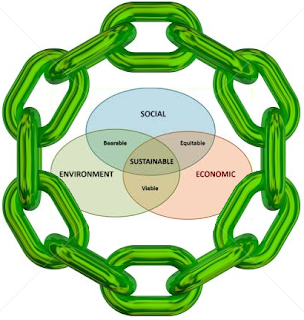The far north will assume a leading role in the war against climate change now that the U.S. has replaced Canada as the leader of the Arctic Council. On Friday April 24th 2015, the U.S. assumed the leadership of the international body that is charged with addressing climate change and other important issues facing the Arctic. The Council's mandate is to protect the Arctic environment and promote sustainable development in the northern communities.
The Council is composed of the United States, Canada, Norway, Denmark, Iceland, Sweden, Finland, Russia and Arctic Indigenous Peoples. Each nation is given the opportunity to lead the Council for two years on a rotating basis.
Leadership is important to the future of the Arctic as the region is on the front lines of climate change. Some of the key interrelated Arctic issues that need to be addressed are melting sea ice, anomalous weather, shipping traffic, and warming causing GHGs to leech from the permafrost.
At an April 24th Arctic Council biennial meeting in Iqaluit, ministers signed a Declaration that reaffirmed each nation’s commitment to maintaining peace in the Arctic, sustaining indigenous communities, and combating climate change in the region.
Failed Canadian Leadership
Canada’s Arctic Council tenure was pro-industry, pro-fossil fuels and pro-shipping. Going into the Iqaluit meeting, U.S. Secretary of State John Kerry acknowledged that governments are not moving fast enough to avert a climate disaster. This statement was directed in part at Canada, one of the world's most egregious climate laggards.
Canada has failed to show leadership during its tenure on a number of fronts. With Canada at the helm, the Arctic Council has been anemic on environmental protection and climate change. Canada's support for fossil fuels and feckless climate leadership have hindered environmental action from the council.
Canadian inaction on climate change increases the risks from flooding that could inundate entire northern communities. Several environmental organizations have criticized Canada's chairmanship of the Council. Greenpeace Canada Arctic spokesperson Farrah Khan said that under Canada's leadership, the Council produced “poor outcomes that saw corporate interest acquire a stronger voice in the pan-Arctic forum, and environmental protection fall low in the priority list."
New Agenda
Greenpeace is among those that have urged the U.S. to do more with the chairmanship of the Council than Canada. A number of groups have also asked the US government to put environmental and climate issues at the forefront of the Council agenda. This was also the message contained in an open letter from British actor Emma Thompson to retired Coast Guard admiral Robert Papp, the U.S. special representative for the Arctic. “It should be noted that unlike its preceding chair, the U.S. is at least actively embracing climate change emissions reduction and environmental protection during its two-year mandate at the Arctic Council’s helm,” Thompson said.
Greenpeace sent all Arctic Council foreign ministers framed copies of its Declaration on the Future of the Arctic. It was signed by almost 2,000 prominent figures including scientists, politicians, religious leaders, intellectuals and celebrities.
Under the leadership of President Obama and Secretary Kerry, the U.S. has been taking huge strides to combat climate change and there is every reason to believe that this will extend to their chairmanship of the Council.
The U.S. has indicated that they intend to shift the priorities of the Council and focus on climate change and the environment. In his address to the eight nation ministerial gathering in Iqaluit, Secretary Kerrysaid Council nations “must do everything we can to prevent worse impacts [from GHG emissions]...The Arctic Council can do more on climate change,” Mr. Kerry added.
The State Department has an ambitious agenda for the Council over the next two years. The U.S. has already made progress securing a pledge to do more to fight black carbon and methane. Black carbon is soot that settles on snow and ice and makes the ice absorb more energy from the sun causing it to melt even faster. A major part of the soot problem in the Arctic comes from diesel generators that are used to supply heat to the four million people that live there. Secretary Kerrysaid, “one of the most important things we can do for the people of the region is help them with renewable, clean energy.” Other sources of black carbon include oil-well flaring and open burning of forests and grasslands.
The United States’ theme for its two years on the Council will be “One Arctic: Shared Opportunities, Challenges and Responsibilities.” and climate change will be front and center. “There’s only ‘one Arctic’ and all of us – the United States, other nations, indigenous peoples, and Arctic communities – must join together to ensure responsible stewardship of this incredible region,” Kerry said at the meeting.
As explained by Khan, "we’re pleased to see the U.S. is making climate change mitigation and ocean protection a priority for their two year term.”
Drilling
Oil extraction is one of the most contentious Arctic issues. Canada was criticized for its support for Arctic oil exploration leading Khan to say, "during Canada’s chairmanship, the oil industry was given unfettered access to Arctic leaders through the creation of the Arctic Economic Council." It remains to be seen how much this will change under American leadership.
There are many promising initiatives that can be expected from US leadership, however a moratorium on Arctic drilling is not expected to be one of them. The U.S. is providing oil leases despite the risksassociated with drilling for oil in the Arctic.
As quoted by Earth Justice, Dan Ritzman, Alaska Program Director for Sierra Club's Our Wild America Campaign, warns against drilling in the Arctic:
“America's Arctic Ocean is the last place we should be drilling for oil. The risks to wildlife, to subsistence communities, and to the climate are clear. Equally clear is the need for the U.S. to take a leadership role on climate, especially as it takes over the Arctic Council next year. Real progress on climate requires the administration begin leaving dirty fuels in the ground, starting with the Arctic Ocean”.
As Thompson explained in her letter to Papp, “Protecting the Arctic from oil drilling goes hand in hand with protecting the world from the worst impacts of climate change.”
A number of celebrities are among those who support Greenpeace’s call for an “Arctic Sanctuary,” which would see the Arctic Ocean protected from oil drilling, industrial fishing and military activity. With so many nations vying for access to Arctic resources, creating a Sanctuary may be the best way to protect the region and preempt potential conflicts in the region.
Need for Cooperation
While cooperation is necessary, it has not been forthcoming under Canada's leadership of the Council. Political concerns expressed by Canada over events in the Ukraine caused Russia’s Foreign Minister Sergei Lavrov to boycott the Iqaluit summit. Russia has even allowed a barge filled with oil to drift across the Arctic Ocean. It is now frozen in the ice about 80 kilometres off Russia's northeast coast where it threatens the summer habitat of Pacific walrus.
Unlike Canada, the U.S. understands the importance of ongoing cooperation with Russia despite the situation in the Ukraine. "The Obama administration has been very clear that Arctic co-operation must continue," said Michael Byers, international affairs professor at the University of British Columbia, "that the issues of climate change in the Arctic are simply too important to be caught up in the tensions in Ukraine and eastern Europe," Byers said.
The Finnish foreign minister Erkki Tuomioja, said, "its in no one's interest to let problems elsewhere impact cooperation in the Arctic.
Hope
The future of the Arctic looks far better under U.S. leadership and it may even increase the prospects of securing a global climate agreement. It is hoped that the world will come together to sign a global emissions agreement at the forthcoming climate talks planned for Paris at the end of the year. The Obama administration has expressed hope that the changes observed in the Arctic will add urgency to the Paris proceedings.
American leadership of the Council may help to lay the foundation for an agreement in Paris. Secretary Kerry has indicated that he plans to use U.S. leadership of the Council to highlight the connection between melting ice in the Arctic and environmental effects around the globe.
The Arctic is important to all of us, and this is an opportune time for the U.S. to take the reigns from Canada. The fact that America is now at the head of the Council bodes well for global efforts to address climate change and other environmental issues.
Source: Global Warming is Real













%2BSustainability%2BSemin.bmp)



